Why Restoration is Critical
Nearly every native ecosystem on the planet is in major disrepair due to development impacts and climate change: there are now more than two billion hectares (about 5 billion acres) of degraded lands globally. Restoration, including reestablishing natural, safer fire patterns, is a major opportunity to renew our planet by:
- Bringing back habitat for endangered species;
- Fighting climate change by drawing down carbon from the atmosphere;
- Replenishing fire-adapted ecosystems safely;
- Preventing soil erosion;
- Improving water quality.
Wild Heritage advocates for “passive” restoration wherever possible that includes removing the primary stressors responsible for ecosystem damage (e.g., road removal, livestock removal). Specifically, we support natural regeneration in older forests that have experienced severe natural disturbances, “proforestation” involving allowing mature forests time to become old growth, and re-wilding that includes restoring apex predators and apex natural disturbances like wildfires to replenish fire-adapted ecosystems while protecting human communities.
Where active restoration is necessary, we believe it should be based on “ecosystem integrity” i.e. protecting and restoring native species, processes, and functions.
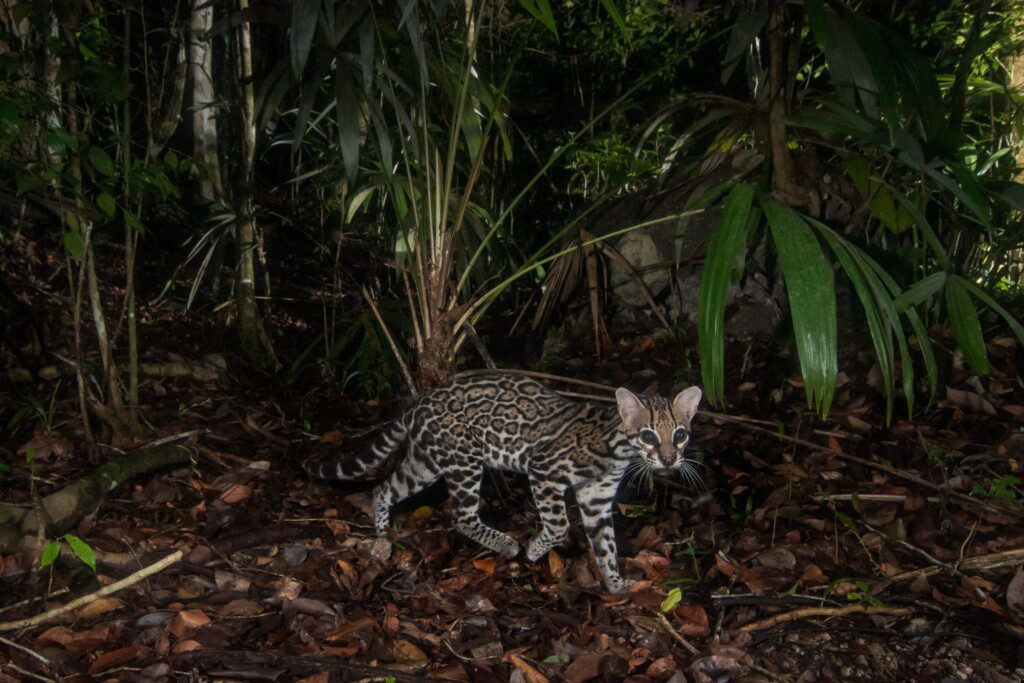
Wild Heritage provides cutting edge science to decision makers, conservation groups, and land managers on ways to restore and renew ecosystems in the most natural and cost-effective way possible and is at the forefront of providing guidance on how to coexist safely with wildland fires.
Passive restoration
The most cost-effective way to restore degraded lands is simply to stop destructive activity and allow an ecosystem time to recover naturally on its own. This is often referred to as “passive” restoration. Passive restoration includes:
- Regeneration: Allowing an area that has been cleared of natural habit to regenerate. Even where extensive clearing has occurred, ecosystems can often recover if there are even a few remaining patches of good habitat remaining.
- Proforestation: Allow a forest that has been logged or otherwise degraded to recover naturally so that it matures into an old-growth forest over time – a process referred to as “proforestation.” Proforestation is important for recovering species and critical for climate change, because a natural forest recovering from disturbance will draw down more carbon out of the atmosphere over the next few decades than planting trees.
- Reestablishing safe, natural wildland fire patterns: In dry forests in western North America, wildland fires typically burn in a mosaic pattern of mixed intensities with low to severe effects on ecosystems. These mosaic patterns are critical for ecosystems to renew themselves because they generate dead trees (and other structures) that provide essential habitat for huge numbers of plant and animal species. This renewal process has been referred to as “Nature’s Phoenix.”
Active restoration
In some cases, ecosystems have been so badly damaged that “active” restoration is needed to jump start or accelerate the natural recovery process. For example, native vegetation needs to be planted or invasive species removed. However, active restoration has often been misrepresented to include everything from mono-culture tree plantations to road building and logging under the pretext of “fuel reduction.” But plantations are not forests, and fuel reduction often intensifies disturbances and compounds negative effects on native ecosystems. Active restoration needs to be based on “ecosystem integrity” i.e. protecting and restoring native species, processes, and functions.Our Initiatives
Wildfire is a critical issue in the western U.S, ecologically, climatically, and socio-economically. Wildfire management is complex, filled with misinformation/disinformation, fear, and hyperbola about wildfire effects on ecosystems. Impacts to communities are worsening, driven by the increasing combination of extreme fire weather (high winds, historic droughts, unprecedented “heat domes”) caused by climate chaos and intensively logged landscapes that prime the fire pump for worse outcomes to both nature and people. Dumping even more money into fire suppression and logging will not only fail to reduce fire impacts to communities, but will put even more emissions into the atmosphere, worsening the fire problem.
We work at local, ecoregional and national scales using state-of-the-art science to reform wildfire policies, restore natural fire patterns in forests and protect communities from more wildfire via effective home hardening and defensible space. We focus mainly on world-class ecoregions where periodic wildfire of mixed severity effects on ecosystems is essential to biodiversity, carbon cycling, and ecosystem dynamics. Fire restores and rejuvenates fire-adapted forests in these regions: fire in an old-growth forest is not the end, but, in fact, is the beginning of a series of developmental stages that forests routinely transition through, each one with its own unique attributes. Based on our ground-breaking science, we have demonstrated that fires burn most intensely in logged landscapes, and that mature/old-growth forests are both resistant to most fires and quite capable of self-regenerating after natural fires (via abundant conifer seedlings) that produce even the largest high severity (all trees killed) burn patches.
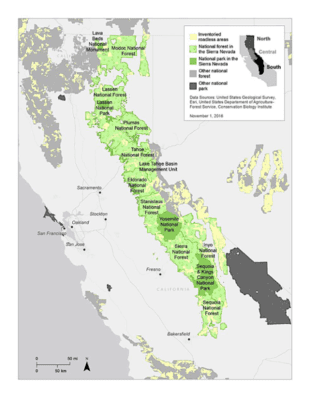
The Sierra Nevada Conifer Forest ecoregion of California is a WWF Global 200 ecoregion with extraordinary levels of plant endemism, plant and wildlife richness, and carbon-dense old-growth (e.g., Giant Sequoia) forests. Fire is a naturally re-occurring architect of the region’s diverse ecology. However, decades of clearcut logging, fire suppression, and road building, combined with extreme-fire weather triggered by global warming and human caused ignitions, have all impacted natural fire cycles. The top threat to the region is logging, especially postfire “salvage” of dead trees used to promote carbon polluting bio-energy plants.
We work with partners like the John Muir Project, in calling attention to the ecological importance of this region and it’s tight-knit association with wildfires through our comprehensive book The Ecological Importance of Mixed-Severity Fires: Nature’s Phoenix and related peer-reviewed publications – and by helping conservation groups oppose destructive thinning and postfire logging projects in the region.
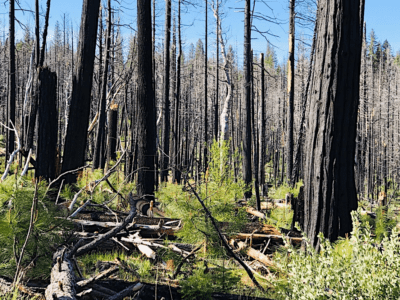
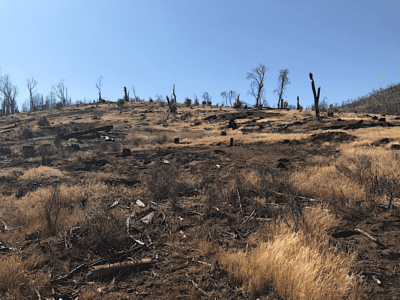
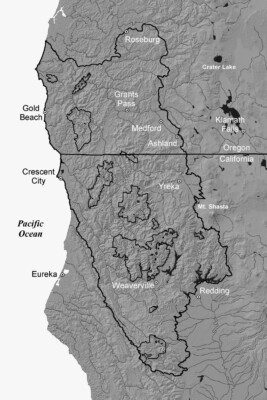
Like the Sierra Nevada, the Klamath-Siskiyou is a WWF Global 200 ecoregion designated as such because of extraordinary levels of plant endemism, conifer richness, and wildlife diversity. It is also a potential climate sanctuary and wildlife corridor if it is not logged. The region is threatened by fire suppression, logging, road building and other developments. Wildfires in this region produce a mosaic pattern of mixed severity fire effects on vegetation when viewed at the landscape level. This includes everything from unburned to severely (most trees killed) burned small and large patches in the same fire complex. The creation of this diverse mixture of habitat types has been referred to as ‘pyrodiversity begets biodiversity.”
Wild Heritage works with dozens of partners in blocking egregious logging projects before and after wildfires, proposing robust conservation reserve designs, ecological restoration, and climate-responsible strategies that protect homes and lives so wildfire can be safely reintroduced into the backcountry. We also propose alternatives to logging that protect home and lives by striving for coexistence with wildfires through climate and fire-ready home building and fire-safe communities. Under certain conditions, we support small tree thinning and prescribed fire.
View Fire Community Protection Alternative
In addition to our focus on these two ecoregions, we often are asked to provide science-based restoration recommendations to conservation groups and land managers in dry forests of eastern Oregon and Washington, California redwoods, Rockies, and east-coast fire-dependent forests and we engage in wildfire policy at the national level.
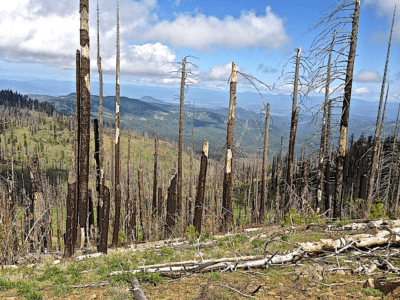
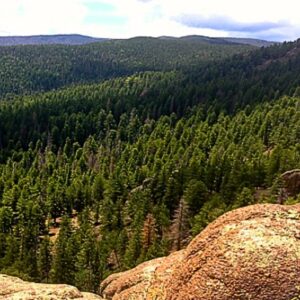
The southwestern U.S. is a bio-culturally diverse region at risk of systemic collapse from widespread “fuels-reduction” logging and developments acting in concert with unprecedented droughts from climate chaos. The region would benefit from large-scale conservation planning that integrates effective climate mitigation with community wildfire-risk reduction, and the additional scientific expertise that would be brought in to assist local-regional conservation partners has been requested of Wild Heritage by donors and NGOs.
We are currently working with NGOs on a conservation blueprint design that lays out the key goals, stressors, and mitigation/adaptation priorities for moving the needle on conservation that is scalable and directly responsive to the global biodiversity and climate crises affecting the region. We are seeking investments for our role in the region with the potential to increase leverage and capacity in subsequent years.
In the meantime, Wild Heritage has assisted groups like Wild Guardians, the Santa Fe Forest Coalition, and the Forest Advocate in responding to Forest Service logging projects with alternatives that focus on community safety first and foremost while getting more wildland fire back into fire-dependent forests safely.
- Wildfire and community safety in Santa Fe
- Commercial logging/thinning is not helping the forest
